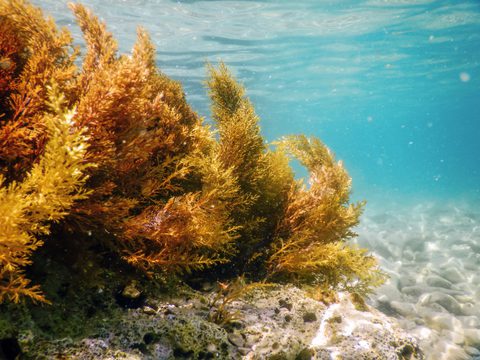

Growing Trends in Using Seaweed and Macroalgae for Novel Products
Seaweed has long been utilised as a foodstuff in Asia, however in the last few years there is a growing interest in the food industry for exploring the utilisation of seaweed and macroalgae in producing clean label ingredients.
Seaweed has long been utilised as a foodstuff in Asia, however in the last few years a number of different companies are waking up to the potential offered by seaweed for various applications in food, healthcare, nutraceuticals, cosmetics and potentially even as a plastic replacement. In the food industry the growing interest in seaweed and macroalgae is driven by the increased awareness of healthy eating and the demand for ‘clean label’ products.
The most common utilisation of seaweeds industrially is the production of alginates from brown seaweed and carrageenan produced from red seaweed, both of these seaweed products are commonly used as thickening agents or emulsifiers within the food industry. Typically, this production is highly commoditised and focusses on the chemical extraction of the alginate. Chemical extraction is a relatively harsh process and therefore many of the other potentially beneficial components of seaweed are lost or severely degraded.
In recent years there have been a number of companies focussed on utilising seaweed for higher value applications especially within the nutraceutical space where companies are looking to extract higher value components, such as fucoidan, which is known to have health benefits. The seaweed can be further processed to produce protein and fibre fractions. A gentle method of extraction, such as enzymes can be particularly advantageous for processing these components, which can be volatile or easily destroyed.
In addition to the nutritional properties associated with eating seaweed it has potential benefits for use in healthcare, particularly in wound or burn care, where the unique carbohydrate structure acts as a good mimic to human connective tissue, which can stimulate the production of collagen and promote the healing process.
Seaweed has also been touted as a potential alternative to plastic, specifically sea lettuce. There are recorded examples of green seaweeds being cast thin like film, which is capable of being printed upon. Additionally, companies are producing fabric spun from seaweed that is light, breathable and can absorb sweat faster than cotton.
Numerous small companies across the world are taking advantage of government grants to scale up the farming and bioprocessing capabilities to create new sustainable industries in coastal communities. A sector to keep your eye on over the next few years.
References:
http://www.seaweed.ie/algae/rhodophyta.php
https://bioplasticsnews.com/2019/04/06/forbes-goes-seaweed-bioplastics/
https://www.bbc.co.uk/news/av/science-environment-45711720/plastics-watch-could-seaweed-replace-plastic-packaging
https://bioplasticsnews.com/2019/04/06/forbes-goes-seaweed-bioplastics/
https://www.the-sustainable-fashion-collective.com/2017/05/11/new-sustainable-seaweed-fabric-seacell/